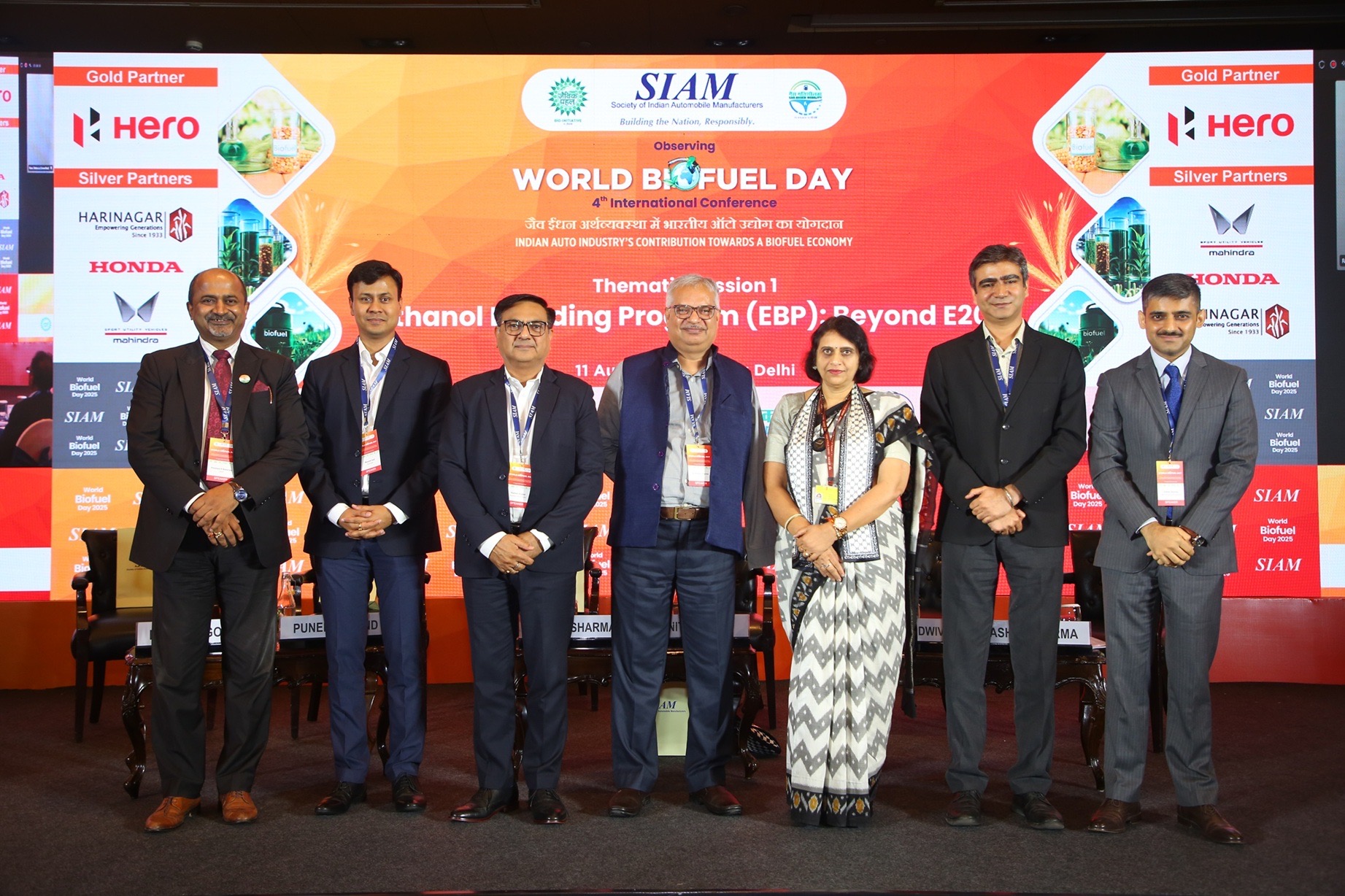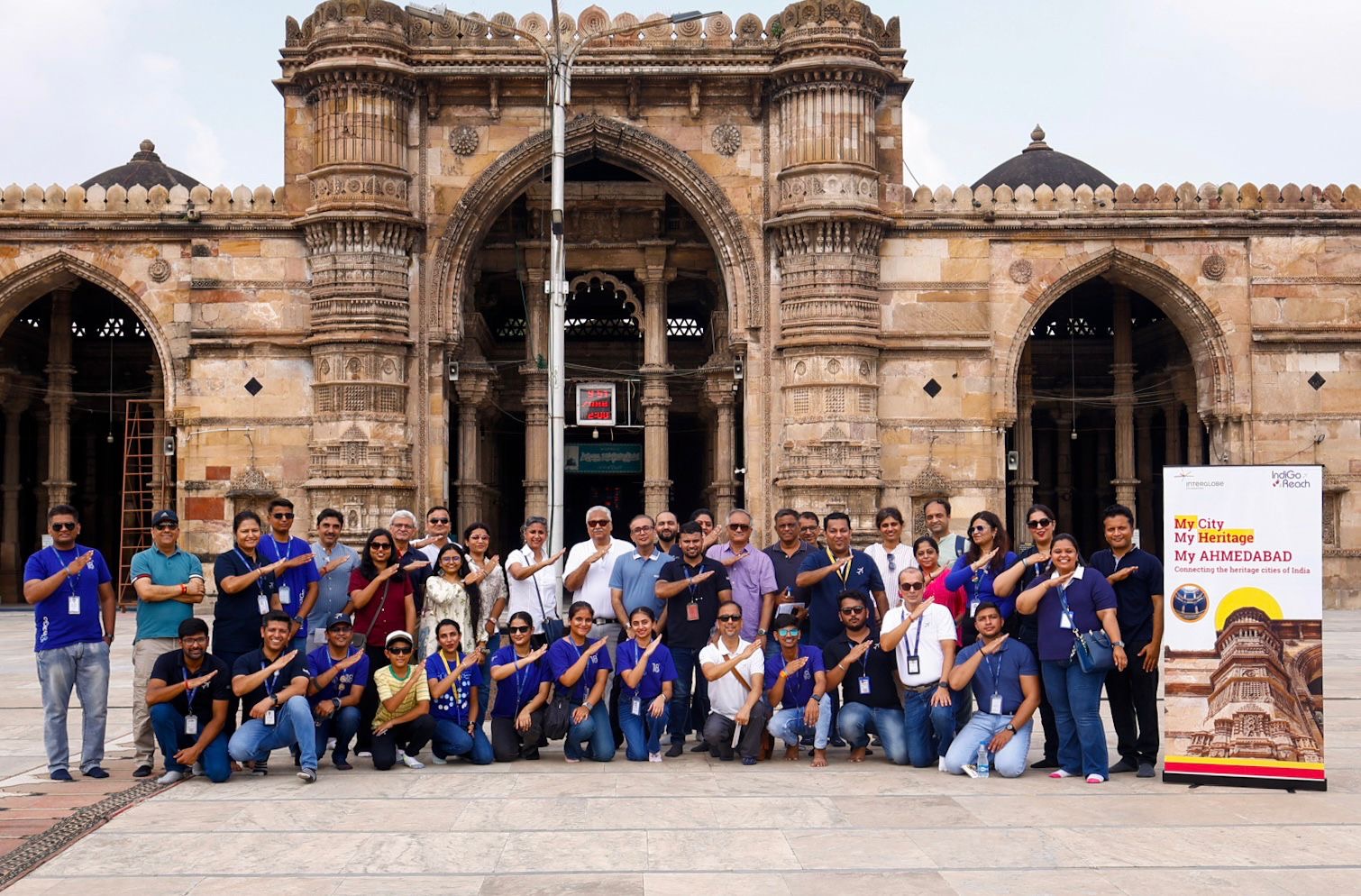New Delhi, August 2025: The Society of Indian Automobile Manufacturers (SIAM), under its Jaivik Pahal (Bio Initiative) campaign, hosted the 4th International Conference on World Biofuel Day 2025 in New Delhi, themed “Indian Auto Industry’s Contribution Towards a Biofuel Economy.” The event brought together senior government officials, global experts, industry leaders, and sustainability advocates to explore strategies for accelerating India’s transition to biofuel-based mobility.
The inaugural session, “Charting the Roadmap for Biofuel Adoption in the Country,” set the tone for the conference with key leaders outlining policy directions, technological advancements, and industry commitments needed to accelerate India’s transition to a biofuel-driven economy.
Welcoming delegates to the conference, Mr. Prashant K. Banerjee, Executive Director, SIAM, reflected on the industry’s shared vision for a biofuel-led future. He noted,“The shift to ethanol economy offers a powerful opportunity to align climate actions with national development goals as we advance towards net zero. It directly contributes to multiple sustainable development goals, clean energy, climate action, good health, rural prosperity, while delivering immediate benefits of air quality across our cities and towns. We can make biofuel economy not just an aspiration, but India’s global identitythrough innovation and collaboration with the support of partners and the government.“
Speaking as the Guest of Honour, Mr. Sanjeev Chopra, Secretary, Department of Food and Public Distribution, Ministry of Consumer Affairs, Food and Public Distribution, Government of India, highlighted India’s accelerated progress in ethanol blending. He said,“ We are all aware that we touched 20% blending, which is something we thought we would do by the year 2030. We’ve done it in 2025, which is a great achievement on the part of all the stakeholders. The heartbeat of the entire transformation was the National Biofuel Policy of 2018, which allowed the diversion of not only C molasses, but also B-heavy, sugarcane juice, and grain, for the ethanol making program. “
Representing Brazil as Guest of Honour, H.E. Kenneth Félix Haczynski da Nóbrega, Ambassador of the Federative Republic of Brazil, said, “India has made remarkable strides in ethanol blending. One of the lessons Brazil learned is that the success of our biofuel program lies not just in technological capacity or feedstock availability, but in the robustness and predictability of the regulatory framework. Biofuels are essential for cleaner air, rural empowerment, energy security, and climate change mitigation. They form a vital part of the societal and economic shift towards sustainable practices. Multiple pathways can and should coexist to achieve carbon neutrality.”
Speaking on behalf of the commercial vehicle industry, Mr R. S. Sachdeva, Deputy Chief Executive Officer & Chief Transformation Officer, VE Commercial Vehicles Ltd., said, “The biodiesel blending programme has been met with equal enthusiasm by the industry, which has made significant efforts to develop every aspect of the ecosystem. These are the early days on how we can blend biodiesel into diesel. We are also at 1% biogas mix with CNG. Feedstock reliability, driver training, and other options the journey cannot happen in silos and it needs advanced collaboration to make implementation smoother.”
Representing Japanese automotive leadership, Mr RyutaNiimura, Chief Engineer, Honda Motor Co. Ltd., Japan, added, “Global biofuel alliance is an important initiative for promoting ethanol blending. There are multiple pathways to carbon neutrality, but developing energy infrastructure for few of these will take time. Bioethanol is a carbon-neutral fuel that benefits customers, the environment, and industry. It can be integrated into existing filling stations, helping to reduce CO₂ emissions over the fuel’s lifecycle. Since ethanol can be produced domestically from available feedstock, increasing agricultural production will not only ensure supply but also improve farmer incomes and livelihoods.”







